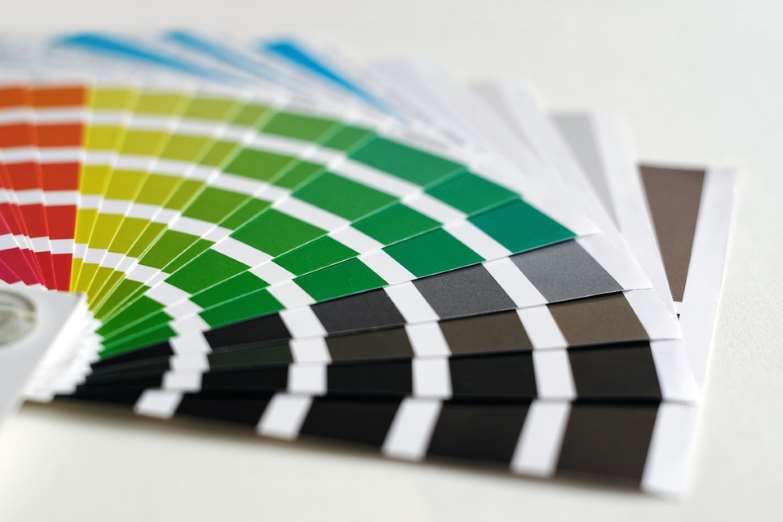Color Psychology and Picking Paint

The age old question of, “Which color should I paint this room?” followed by the holding up four shades of blue that look nearly identical, but are still so very different. It’s enough to drive anyone insane.
Many homeowners start their home remodel in high spirits. Your home can be the ultimate blank slate, each area of your living space a blank canvas. Then they see how big a paint color deck is. Unlimited potential can be stressful. How do you start narrowing down your options when there are so many?
Few things can bring your momentum to a grinding halt faster than having to choose a color palette for your project, but choose you must. ArDan Construction has some simple tips from our experience as a painting contractor that can make that choice (slightly) easier.
What may surprise you is that many of the points we’ll be covering below are only tangentially about color. Light, geometry, décor choices, and utility all play a part here.
Color Psychology 101
Regardless of our consciousness of it, color influences our mental and physical states. Different cultures assign different meanings to colors, but some effects are believed to be the same everywhere. Please note that the shade of the color being used can increase or decrease these effects.
- Red – Excites the heart, elevates blood pressure, may induce a feeling of urgency, and excessive exposure can lead to anxiety.
- Orange – Portrays vitality, activates the brain’s reasoning area, excessive exposure may lead to anxiety.
- Yellow – Creates a sense of joy, also activates the brain’s logic center, excessive exposure may lead to anxiety.
- Green – Promotes balance in the brain between physical sensations and feelings, can assist in swift decision-making.
- Blue – Soothing and approachable, suppresses hunger, boosts efficiency and enhances focus.
- Purple – Activates the brain’s problem-solving region and enhances imaginative thinking.
- Pink – Calming (used in jails to control aggression), although too much can be tiring; darker shades have similar effects as red.
- White – Commonly seen as a clean canvas, can ignite imagination.
- Gray – Signifies safety and knowledge, as well as technology.
- Tan or Brown – Generates sensations of steadiness, comfort, snugness, and dependability.
- Black – Provides a sense of sophistication and ceremony.
Sequence
Your color choices should come very early in the process of planning a remodel. The colors of your walls, ceiling, and trim don’t exist on their own, after all. They need to work in tandem with your furniture, countertops, appliances, and fixtures. You can still change your mind later, but having an idea in mind can help your color choices to the project together.
Light
Natural light is one of the greatest assets in a designer’s toolbox. Good sunlight makes a space warmer, both literally and psychologically. It also gives you more flexibility in terms of color choices, since a room with good light can take a darker color without seeming cramped, or can make it bolder, the brighter colors pop. Pay attention to the amount and quality of light at different times of the day.
Floor Plan
If you’re sticking to a classic design with many discrete rooms, it’s easier to get a bit creative with your color choices. That way, the vibrant colors in your kids’ bedrooms won’t clash with the more subdued tones you might like for your bedroom, or the muted shades you might choose for a bathroom.
Open plan designs require a bit more thought. When you can stand in your front foyer and see your living room, dining room, and kitchen all at once, you may choose different colors for each space to delineate their different purposes; this keeps the open plan from looking like one big box. However, you should also pay attention to color theory to ensure that the colors harmonize with one another.
Décor
Some of us like a minimalist approach that’s light and airy. Others have accumulated a lot of artwork, knick-knacks, and collectibles over the years that need custom cabinetry to showcase them. There are two different possibilities here. Plain white, or an off-white with just a tinge of color, keeps the attention on your décor instead of the walls. On the other hand, if you have a thematic focus or something you’d like to set off — a specific color scheme or accent color in your living room furniture, the Jadeite collection in your kitchen — you may choose a color with that in mind.
Space
Something else to keep in mind is the amount of space — both actual and perceived — you have in any given room. Darker colors and accent walls can make a room look smaller. Certain colors may connote energy, quiet, or calm, and can make a space seem cozier than it is, or can open up a cramped space.
Talking to your design-build remodeling professional can help you make better sense of your options. Call ArDan Construction at (602) 571-0383 for your home improvement project!
Have a project coming up? Let's chat.
"*" indicates required fields






